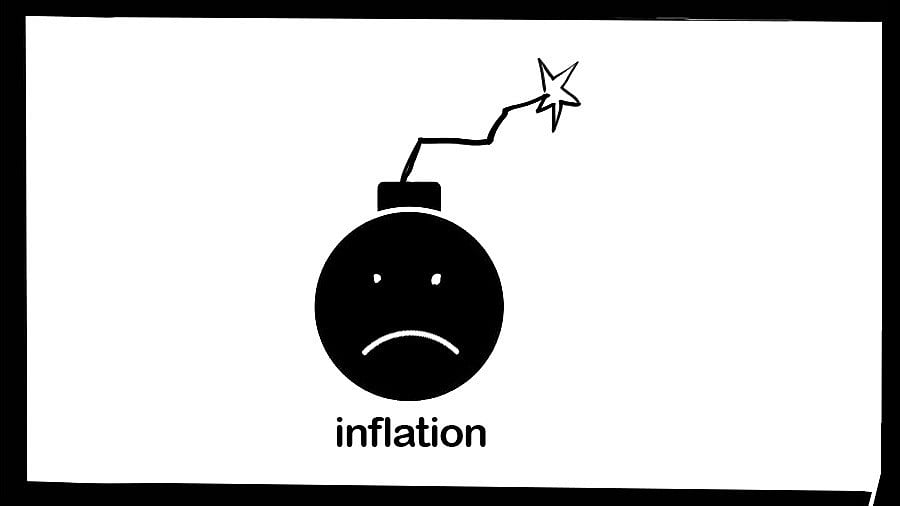
Several recent data points emerging from government and other sources are signaling an economic slowdown. Whether this is cyclical or not, only time will tell. Whether this is a pattern aligned with the global economic slowdown or not, we can examine. If this is cyclical or temporary, it is supposed to pick up six months later. But then an economy slowing down, even if cyclically, during the festival season is worrisome. In the last quarter of the calendar year, festive cheer and consumer spending usually drive an economy boost. That seems to be missing here.
First, the data points. These are from industrial production, exports, and tax collection, especially Goods and Services Tax (GST). All these are from the government. Then, there is data and assessment from the Reserve Bank of India (RBI), which recently concluded its monetary policy meeting and decided not to cut interest rates. The RBI conducts a sentiment survey and reports it every quarter, and this survey gives an indication of the future trajectory of the economy. Finally, there is data from private sources such as the Purchase Managers’ Index (PMI) or quarterly results of companies that report their earnings, profits, and growth.
The Index of Industrial Production (IIP) went down in August. The growth rate was going down for three months in a row. The August number (negative 0.1) is the lowest in nearly two years. While IIP is known to be volatile and subject to post facto changes and adjustments, the trend clearly shows a slowdown, especially in manufacturing. Mining activity was negatively impacted by unseasonal rains, but the manufacturing slowdown is to be noted. The sale of automobiles, a key indicator of manufacturing growth, fell by 19% in September, just at the beginning of the festival season.
Related to this is the two-month strike at the Samsung Electronics factory in Tamil Nadu; this factory accounts for nearly Rs 20,000 crore of Samsung’s sales revenue in India and is a crucial example of attracting foreign investors. This month, the Managing Director of Volvo Group in India cautioned that the country’s manufacturing sector has to rev up substantially to drive sustainable and high GDP growth. The share of manufacturing is stuck at around 16% of the GDP despite strong initiatives such as Make in India.
Skill gaps hit employability
The shift of Western companies from China to India has not happened in a big way. India’s plans to set up a semiconductor complex and initiatives for green hydrogen and electric vehicles have not made real headway. A shortage of skills is another aspect crucial to the growth of the manufacturing sector. Earlier this year, the Taiwanese Minister for Foreign Affairs cautioned India about addressing the shortage of skilled engineers if it wants to attract investments in chip-making and semiconductor manufacturing. Taiwan is keen on helping India in electronics manufacturing, but other hurdles such as infrastructure and high import tariffs have to be overcome.
The irony is that in India, while there is a shortage of skills required for manufacturing, nearly 30% of college graduates in the 25-30 age group are unemployed. This means that college education has not made them industry-ready or employable. This is a dire comment on the state of education curricula and the role of academic institutions in getting the youth ready for work. This gap is felt in a variety of sectors, including auto, auto ancillaries, textiles, and mining.
The other data pointing to weakness is the fall in merchandise exports in August to $34.7 billion, leading to a widening of the trade deficit. The rupee-dollar rate also dropped below 84, causing concerns about the deficit and inflation. The PMI was at an eight-month low at 56.5 in September, down from 57.5 in August. This is an indicator of the bullishness of factory managers on outlook.
The trend in GST collections also points to a slowing economy. The collection in September, Rs 1.73 lakh crore, was lower than in August (Rs 1.75 lakh crore). The September collection was barely 6.5% higher than last year. Since GST is a transaction tax, it keeps pace with the growth of nominal GDP, which is growing at around 10% or higher (due to inflation and volume growth). GST growing slower than nominal GDP is a troubling sign.
Adding to this worry is the news that the GST Council may consider a hike in GST rates to make up the shortfall that may arise if the compensation cess is removed.
Thus, there are indicators of a slowdown from various quarters. Even employment in manufacturing went down from 12% to 11% of the workforce; in the agriculture sector, it went up from 43% in 2018-19 to 46% now, an increase of 6.8 crore workers. However, a return of workers to agriculture and rural areas means they are taking up lower-wage, lower-productivity jobs as compared to manufacturing and services. This might mean lower purchasing power and, hence, lower consumer spending. We need to sharply increase manufacturing employment for an increase in consumer spending as well as household incomes.
India’s economy is still growing faster than most other large economies, including China. But it needs to be noted that the US growing at 3% is like India growing at 30%, since the former is ten times bigger. The US is not experiencing a slowdown yet either. So, India’s slowdown cannot be attributed to a global phenomenon. Besides, we also need to worry about the impact of the wars in Ukraine and the Middle East, rising oil prices, and inflation.
The RBI, which should have decreased interest rates to spur economic growth, chose not to because of concerns over inflation. The economy will face a stiff challenge over the next six months as it navigates between the twin challenges of a slowdown and still high inflation.
(The writer is a Pune-based economist)
(Syndicate: The Billion Press)